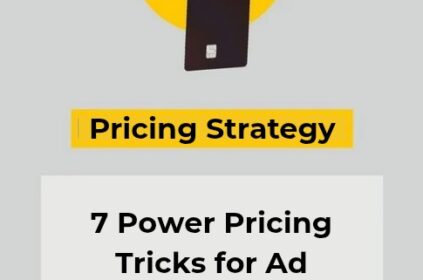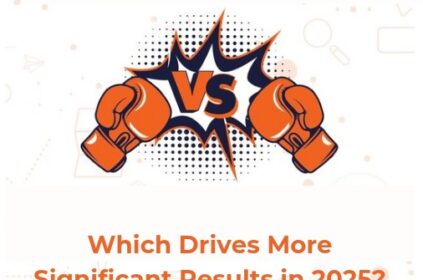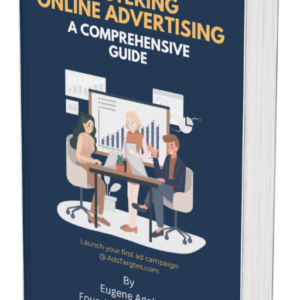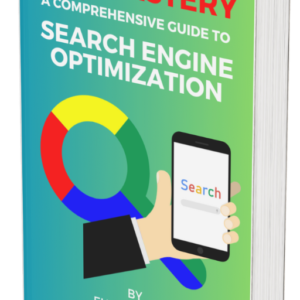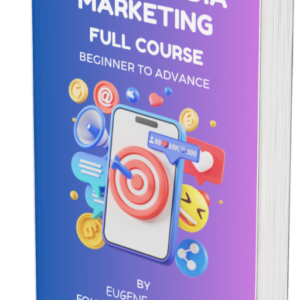Google Shopping Ads remain one of the highest-converting ad formats for eCommerce brands, but 2025 brings new complexities.
With rising CPCs, AI-driven targeting, and shifting consumer behavior, running profitable campaigns now demands more than just uploading a product feed and setting a budget.
Brands that thrive are the ones applying the best Google Shopping Ads strategies 2025 has to offer—strategies rooted in performance data, automation with oversight, and full-funnel visibility.
Whether you’re managing a store on Shopify, WooCommerce, or BigCommerce, or scaling a catalog of 50,000 SKUs, the same principle holds: what worked last year probably isn’t enough anymore.
This guide walks through what does work—tactics tested and proven to increase sales, cut wasted spend, and drive consistent ROI.
If your goal this year is to convert more clicks into customers and stay ahead of competitors in the Shopping tab, here’s what it takes to make that happen.
#1. Optimize Your Product Feed Like Your Revenue Depends On It
The foundation of all successful Google Shopping Ads campaigns lies in the product feed. In 2025, Google’s machine learning models rely heavily on feed accuracy to determine where and how your products appear.
An incomplete, outdated, or poorly structured feed cripples your visibility—and by extension, your conversions.
Start by reviewing the core components: product titles, descriptions, GTINs, image links, availability, price, and brand.
Titles should be structured with priority information up front. For example, instead of “Nike Shoes – Red – Size 10,” go with “Men’s Nike Air Max Red Running Shoes – Size 10.”
This small change boosts your relevance for keyword-matching and click-through rates.
Descriptions should mirror the way customers search, incorporating high-intent phrases naturally.
For instance, don’t just say “Durable winter coat.” Expand it to “Waterproof Men’s Winter Coat with Hood – Great for Extreme Cold.” This appeals to algorithm relevance and human decision-making.
High-quality product images also influence impressions and conversions. In 2025, Google will penalize blurry or generic catalog images.
Invest in crisp, unique visuals with consistent aspect ratios and backgrounds. Include multiple angles where supported.
Lastly, update your feed daily or at least several times a week. Out-of-stock products that remain listed lead to disapprovals and erode consumer trust.
To truly benefit from the best Google Shopping Ads strategies 2025 offers, your product feed must be a live, dynamic reflection of your inventory and pricing.
#2. Use Smart Bidding with Manual Overrides to Avoid Overspending
Smart bidding is one of Google’s default ad mechanisms, and in 2025, it has only gotten better.
However, many advertisers blindly trust automation without layering in manual control. That’s a mistake. The best Google Shopping Ads strategies 2025 marketers use combine both.
Start with Target ROAS (Return on Ad Spend). It allows you to optimize for value, not just clicks. You’ll need historical data—at least 15 conversions over the past 30 days per ad group—for the algorithm to function efficiently. But don’t stop there.
Use bid modifiers by device, location, or time-of-day to manually influence Smart Bidding outcomes.
If you notice mobile users convert better during weekends, increase bids for mobile devices on Fridays through Sundays. If desktop traffic from certain zip codes doesn’t convert, dial it back.
Also, set campaign-level budget limits that prevent sudden overspends triggered by algorithm spikes.
Even though Smart Bidding is designed to maximize return, it occasionally overcorrects. Keeping a ceiling protects your overall budget health.
Combining automation with strategic human oversight is how you unlock superior performance. If you want to leverage the best Google Shopping Ads strategies 2025 has to offer, don’t “set it and forget it”—guide the algorithm with guardrails.
#3. Segment Campaigns by Product Performance and Intent
Lumping your entire catalog into one campaign is convenient, but costly. Strategic segmentation is how top-performing advertisers scale effectively.
To execute this well, divide your products based on profitability, performance, and purchase intent.
For example, create separate campaigns for high-margin products, seasonal items, new arrivals, and best-sellers.
This gives you granular control over budget allocation and bidding strategies. You might choose to push budget aggressively into a product category that converts at 6x ROAS while pulling back on a lower-performing group.
Additionally, segment by funnel stage. Some Shopping campaigns should focus purely on discovery—bidding on broader, high-volume search queries to introduce users to your brand.
Others should target low-funnel intent like “buy” or “discount” keywords where shoppers are ready to convert.
When you apply these principles, you not only control spend but also feed Google’s Smart Shopping algorithm with better contextual data.
This is what separates amateur ad managers from those using the best Google Shopping Ads strategies 2025 makes possible.
#4. Sync Your Merchant Center With CRM and Inventory Systems
Disconnection between your Merchant Center and inventory or CRM tools causes more lost revenue than most teams realize.
Picture this: a user clicks on a product that’s already out of stock, gets annoyed, and never returns. Or worse—Google suspends your account for poor feed quality.
Integrating your CRM and inventory software with your Merchant Center ensures that your ads always reflect real-time product availability, price changes, and restock timelines.
Platforms like Shopify, WooCommerce, BigCommerce, and Magento now offer robust API support to make this easier in 2025.
More importantly, syncing data enables retargeting based on behavior and purchase history.
You can create Smart Shopping campaigns that show complementary products to existing customers or re-engage users who abandoned their cart with dynamic product ads.
By aligning your back-end data with your Shopping feed, you reduce errors and increase personalization.
This type of operational sync is one of the most underrated yet critical components of the best Google Shopping Ads strategies 2025 professionals use to dominate their categories.
#5. Leverage Performance Max Campaigns Without Losing Control
Performance Max campaigns allow you to advertise across all of Google’s properties—Search, Display, YouTube, Discover, and Gmail—using one unified campaign.
While powerful, many advertisers complain about the “black box” nature of Performance Max. The key is to manage them alongside standard Shopping campaigns rather than relying on them entirely.
Use Performance Max to support branded campaigns, seasonal pushes, and upsell opportunities.
For instance, if your Shopping campaign targets general queries like “men’s watches,” let Performance Max handle searches for your brand name and retargeting across Gmail or YouTube.
Google allows advertisers to submit audience signals in 2025, including custom segments based on site behavior, purchase history, and interests.
Feed that data into your Performance Max campaigns to improve algorithmic accuracy.
Also, monitor placement reports and use negative keywords on your standard Shopping campaigns to reduce cannibalization.
This keeps control of core keywords while Performance Max picks up what standard Shopping might miss.
Using this hybrid approach is one of the best Google Shopping Ads strategies 2025 eCommerce brands use to scale reach without losing strategic clarity.
#6. Run A/B Tests on Creative and Landing Pages Linked to Shopping Ads
Shopping Ads are visual-first. That’s why optimizing your product images and landing pages is just as important as keyword bidding.
Yet most advertisers never A/B test their visuals or destination URLs. In 2025, that’s no longer optional.
Start by testing multiple product images. Try one with a white background and one in a lifestyle setting.
Run a third version with a close-up of the product’s texture or material. Then track click-through rates (CTR) and conversion rates by creative.
Similarly, test different product titles. A/B testing “Water Bottle – 24 oz Stainless Steel” versus “Insulated 24 oz Stainless Steel Water Bottle with Straw Lid” may yield surprising differences in performance.
Also, test landing page formats. A minimal layout with large product photos and limited text may convert better for apparel, while a feature-rich page with comparison charts might work best for electronics.
Google allows for experiment-based testing even within Shopping campaigns if you structure your ad groups carefully.
By optimizing what shoppers see and where they land, you can dramatically increase ROAS. It’s one of the less talked-about, but crucial best Google Shopping Ads strategies 2025 marketers use to edge out their competition.
#7. Invest in UGC and Reviews to Improve Trust and Conversion Rates
Google Shopping Ads now include review stars, merchant ratings, and sometimes even snippets from product reviews.
In 2025, this social proof isn’t just a bonus—it’s a necessity. Shoppers trust other shoppers more than they trust your ad copy.
Encourage verified buyers to leave reviews using automated email flows or incentives like discount codes for feedback.
Use platforms like Yotpo, Judge.me, or Loox to aggregate reviews and sync them directly with your Merchant Center.
Also, prioritize UGC (user-generated content) in your Shopping feed. Google allows select merchants to submit lifestyle images from customers as supplemental visuals.
These real-life photos outperform standard catalog images in nearly every category.
When running Shopping campaigns, enable review extensions where possible and highlight products with 4-star ratings and above.
Ads with reviews get 17% higher CTR and 21% higher conversion rates on average, based on data from PowerReviews.
For competitive niches like electronics, beauty, and apparel, social proof often determines who gets the click.
Incorporating this into your campaign setup is one of the highest-converting, best Google Shopping Ads strategies 2025 marketers can use right now.
Why Budget Allocation Makes or Breaks Shopping Campaign Performance
Too many brands set a flat daily budget across campaigns and wonder why results are inconsistent.
The reality is that how you allocate your budget directly determines your return. The best Google Shopping Ads strategies 2025 brands rely on start with performance-based budget distribution—not equal splits.
Review historical data weekly to see which campaigns deliver the highest ROAS. Shift budget toward those top performers and reduce spend on underperforming product groups.
If you’re using Smart Bidding, avoid letting Google distribute spend automatically without layering in data-backed caps or multipliers.
Also, consider seasonality and sales cycles. Allocate more to seasonal bestsellers during peak months and plan early for promotional windows.
A backloaded budget kills momentum, especially during competitive shopping periods.
Finally, reserve 10–15% of your Shopping ad budget for experimentation—new product launches, feed variations, or creative testing.
As Google’s shopping best practices suggest, flexibility and iteration are key to optimization.
You can’t afford to treat the budget as a “set it and forget it” line item. A fluid, data-driven budget approach separates scaling campaigns from stagnant ones.
How Shipping Speed and Return Policy Impact Conversion Rates
In 2025, shoppers don’t just compare prices—they compare shipping speeds and return experiences too.
And Google Shopping Ads reflect that. Product listings now display estimated delivery windows and sometimes return policies, directly influencing click-through and purchase rates.
Fast, transparent shipping drives trust. If your competitors offer 2-day delivery and you advertise 5–7 business days, expect a lower CTR and fewer conversions.
Tools like Google’s shipping configuration guide can help you display accurate and appealing delivery times.
Return policy matters too. Shoppers are more likely to click and buy from ads that include “Free Returns” or “30-Day Returns.”
You can surface these in your Shopping listings by submitting policy details via your Merchant Center.
Update these policies regularly to reflect changes in fulfillment. As expectations for convenience continue rising, even small upgrades—like reducing a return window from 15 to 7 days—can hurt your competitiveness.
Optimizing delivery and return settings is one of the less obvious but essential best Google Shopping Ads strategies 2025 eCommerce brands should prioritize.
Why Negative Keywords Still Matter in 2025 Shopping Campaigns
Even though Shopping campaigns don’t target keywords in the traditional way, negative keywords remain a critical optimization lever.
In fact, with Performance Max and Smart Shopping handling broader targeting, applying negative keywords may be your only defense against wasteful spend.
Let’s say you sell premium leather shoes. Without exclusions, your ads might appear for searches like “cheap leather shoes” or “synthetic leather boots”—clicks with low purchase intent and poor match.
You’re paying for impressions that won’t convert. By adding “cheap,” “synthetic,” or unrelated brands as negative keywords, you focus your spend where it matters.
You can apply negatives at the campaign, ad group, or shared list level. Use Google’s search term report to identify irrelevant queries and update your exclusions weekly.
In 2025, negative keyword management is especially important for brands running both Performance Max and Standard Shopping.
It prevents overlap, ensures cleaner targeting, and improves budget efficiency. It’s not outdated—it’s overlooked.
The best Google Shopping Ads strategies 2025 marketers use still rely on old-school keyword hygiene for new-school automation success.
Conclusion
The eCommerce landscape is more competitive in 2025 than ever before. Google Shopping Ads remain one of the most effective tools to drive sales, but only if you use them correctly.
From optimizing your feed and syncing real-time inventory to leveraging smart bidding and segmenting by performance, each tactic compounds results.
Integrating CRM data, running A/B tests, and combining creative efforts with user-generated content builds the trust and momentum you need to stay ahead.
The best Google Shopping Ads strategies 2025 aren’t about shortcuts or hacks—they’re about disciplined execution, data-informed decisions, and adapting to platform shifts. Do that consistently, and you won’t just survive—you’ll grow.


